| Be aware that Pictures and Movies presented on this side can be quite large and demanding. They are free to use for educational purpose, provided the proper references are given. | |||
Pictures |
|||
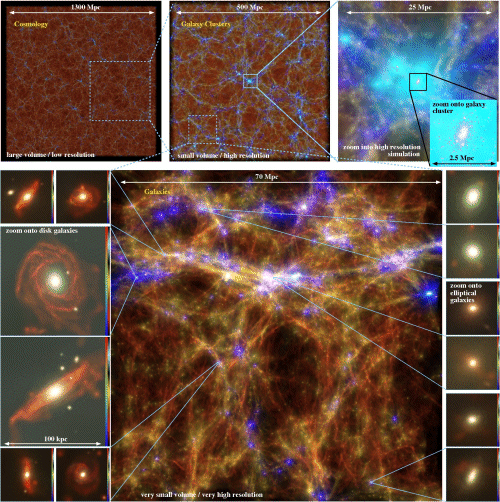
|
Magneticum Pathfinder CollageThe different boxes of Magenticum Pathfinder as overview. Zooming from the largest scales (GPc scales) into galaxy clusters (Mpc scales) and even further down onto individual galaxies (tens of kpc scales).
Credit: Dolag et al. 2014, Teklu et al. 2014 |
||
Box0/mrThe picture shows a visualization of Box0/mr from the Magneticum simulation set. The shown region spans a total size of 3800 Mpc. At z=0.0 it contains a total number of 1.86*1011 dark matter, gas, star and black hole particles. Visualized is the gas which fills the space between the galaxies (color coded according to its temperature from cold/brown to hot/light blue) together with the galaxies and stars forming in the simulation (colored in white).
Credit: Dolag et al. 2015 |
|||
Box2b/hrThe picture shows a visualization of Box2b/hr from the Magneticum simulation set. The shown region spans a total size of 1000 Mpc. At z=0.2 it contains a total number of 5.4*1010 dark matter, gas, star and black hole particles. Visualized is the gas which fills the space between the galaxies (color coded according to its temperature from cold/brown to hot/light blue) together with the galaxies and stars forming in the simulation (colored in white).The lower picture shows a closeup onto the most massive galaxy cluster formed within the simulation.
Box2b/hr (stars)The picture shows a visualization of the stellar component within the Box2b/hr from the Magneticum simulation set. Stars are color coded according to their age, from bluish for young to redish/yellowish for old.
Credit: Dolag et al. 2015 |
|||
Box1/mrThe picture shows a visualization of Box1/mr from the Magneticum Pathfinder simulation set. The shown region spans a total size of 1300 Mpc. At z=0 it contains a total number of 0.7*1010 dark matter, gas, star and black hole particles. Visualized is the gas which fills the space between the galaxies (color coded according to its temperature from cold/brown to hot/light blue) together with the galaxies and stars forming in the simulation (colored in white).
Credit: Dolag et al. 2014 |
|||
Box2/hrThe picture shows a visualization of Box2/hr from the Magneticum Pathfinder simulation set. The shown region spans a total size of 500 Mpc and at z=0 contains a total number of 0.9*1010 dark matter, gas, star and black hole particles. Visualized is the gas which fills the space between the galaxies (color coded according to its temperature from cold/brown to hot/light blue) together with the galaxies and stars forming in the simulation (colored in white).
Credit: Hirschmann et al. 2014 |
|||
Box2/hr most massive clusterThe picture shows a visualization of the most massive cluster in Box2/hr from the Magneticum Pathfinder simulation set. The shown region spans a total size of 25 Mpc. Visualized is the gas which fills the space between the galaxies (color coded according to its temperature from cold/brown to hot/light blue) together with the galaxies and stars forming in the simulation (colored in white). The simulation resolves more than 700 galaxies within the cluster, of which 300 contain a central, supermassive black hole.
Credit: Hirschmann et al. 2014 |
|||

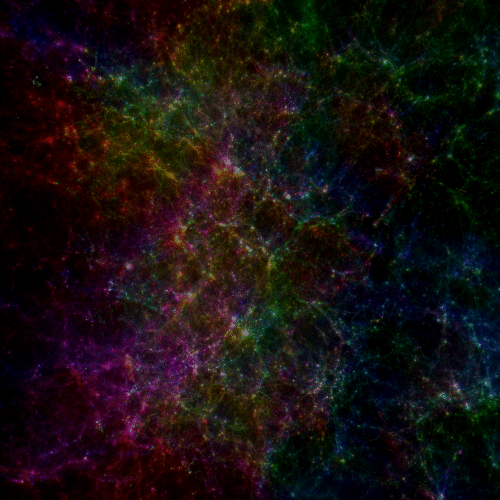
|
Vizualisation of Box2/hrVizualisation of temperature (left) and 3D velocity field (right) of Box2/hr of the Magenticum Pathfinder set.
Credit: Dolag et al. 2014 |
||
Movies |
|||
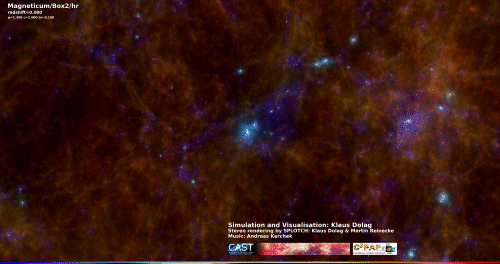
|
Box2/hr stereo fly through its evolutionThe picture shows a visualization of the time evolution of Box2/hr from the Magneticum Pathfinder simulation set. The view at the beginning spans a total size of 500 Mpc and then zooms onto the most massive cluster forming within the simulation. Visualized is the gas which fills the space between the galaxies (color coded according to its temperature from cold/brown to hot/light blue) together with the galaxies and stars forming in the simulation (colored in white).
Left eye:
1280x712 (53 MB),
1920x1080 (120 MB),
4096x2160 (530 MB);
Credit: Hirschmann et al. 2014 |
||
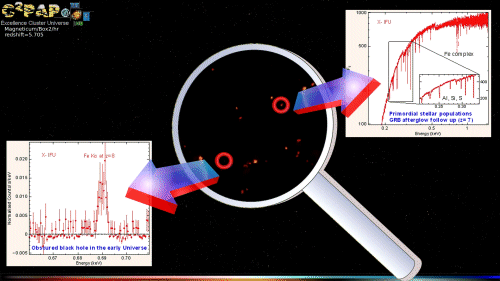
|
Advertising Athena+The picture shows a visualization of the time evolution of Box2/hr from the Magneticum Pathfinder simulation set at high redshift for promoting sciene which can be performed with the planned Athena+ x-ray mission.
Credit: Dolag et al. 2014 |
||
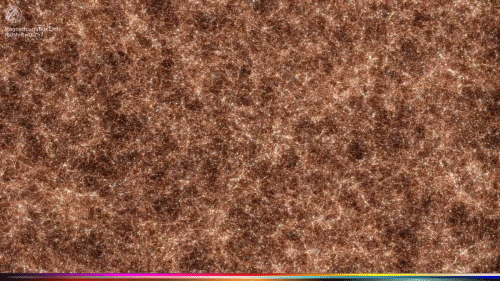
|
Box1/mr fly through its evolutionThe picture shows a visualization of the time evolution of Box1/mr from the Magneticum Pathfinder simulation set. The view at the beginning spans a total size of 1300 Mpc and then zooms onto the most massive cluster forming within the simulation. Visualized is the gas which fills the space between the galaxies (color coded according to its temperature from cold/brown to hot/light blue) together with the galaxies and stars forming in the simulation (colored in white).
Credit: Dolag et al. 2014 |
||

|
Filament: where the gas comes fromShown is a 15 megaparsec large region centred on the counterpart of the A3391/95 analog system from the Magneticum Pathfinder simulation Box2/hr. The different lines show how material within the two clusters (red and gold) and the bridge (blue) in between was assembled within the last ten billion years.
Credit: V. Biffi and K. Dolag |
||
Planetarium |
|||
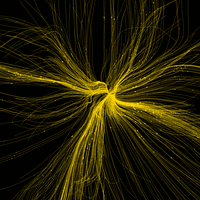
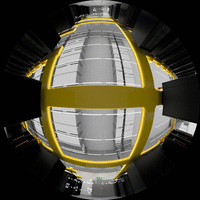 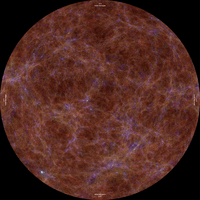
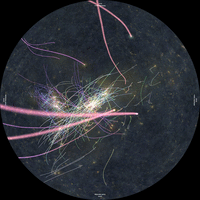 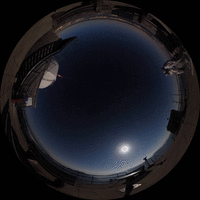
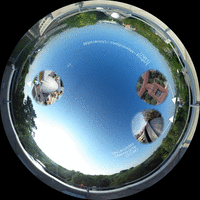 |
Ausgerechnet! Unser UniversumWhat happened after the big bang? How do stars and galaxies originate? What role does dark matter play in this? How does our universe evolve? To bring such outstanding questions to the public, the Magneticum Team lead the development of a new full-dome show, which will be shown daily at the Planetarium of the Deutsches Museum. Here scientists show and explain how they have used the supercomputer SuperMUC to create elaborate and spectacular simulations to understand, how our universe is evolving.
Previews:
Credits: Klaus Dolag, Deutsches Museum, Universe Cluster |
||

